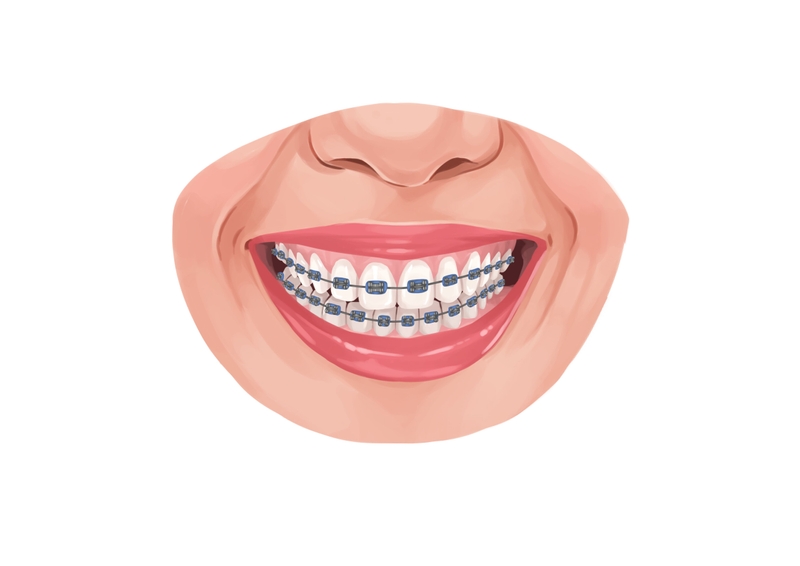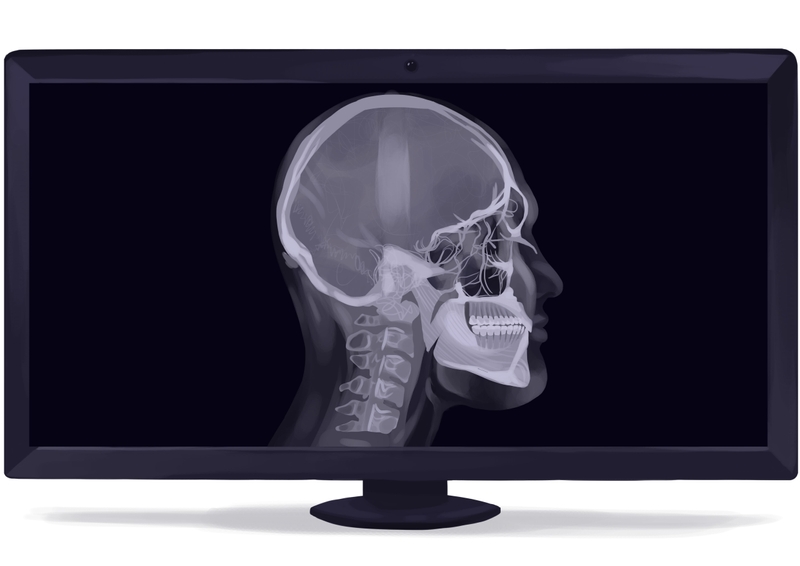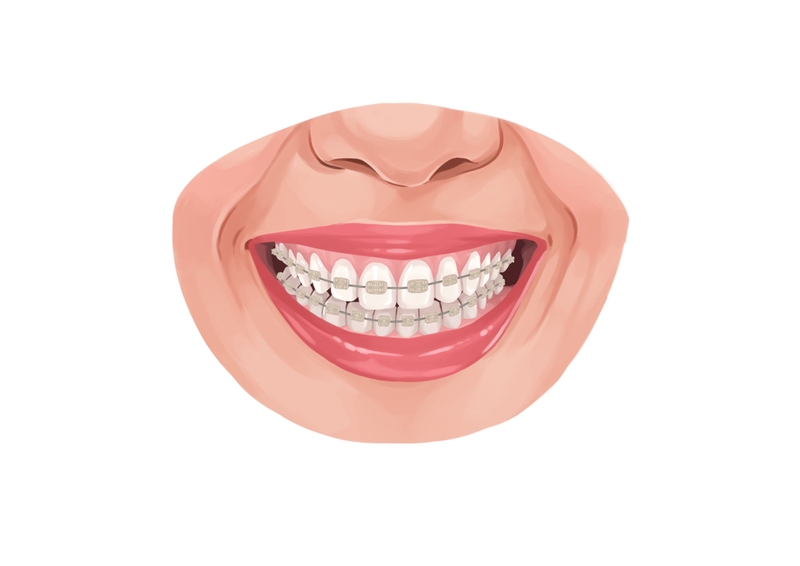- On average, metal braces cost about $5,350, while other types of braces, such as ceramic braces, self-ligating, invisible and lingual braces, can cost more.
- There are additional costs associated with braces, including maintenance and diagnostics.
- The cost of braces depends on your age, dental insurance, the condition of your teeth, the length of treatment and the type of braces you choose.
Looking for reasonably priced braces? Book an affordable dentist with Authority Dental. Have braces emergency? Find emergency dental care near you.
According to the American Association of Orthodontists (AAO), there are approximately 6.66 million active orthodontic patients in the US and Canada. Braces remain one of the most common orthodontic treatments, and their popularity has increased since COVID-19, partly due to the discretion provided by mask-wearing.
Are you considering getting braces too, but unsure about the costs? Here's everything you need to know.
How much are braces without insurance?

Picture by Authority Dental under CC 2.0 license
The overall cost of braces depends on many factors. The biggest determinants are:
your age,
the issues the orthodontic condition causes you,
the length of treatment, and
the type of braces you choose.
The average prices for braces vary significantly, starting from $5,000 and reaching $12,000.
| BRACES TYPE | AVERAGE COST | COST RANGE |
|---|---|---|
| Metal | $5,350 | $1,800-$8,500 |
| Ceramic | $5,500 | $2,000-$10,000 |
| Self-ligating | $5,500 | $2,500-$8,000 |
| Invisible | $5,700 | $1,100-$9,500 |
| Lingual | $12,000 | $5,000-$13,000 |
Of course, your orthodontist might decide that you are not a good candidate for the type of braces you would like. Remember, it is the healthcare provider who will be making the final decision.
There are plenty of types of braces, including traditional braces and lingual braces which are fitted to the back of the teeth. However, treatment for people with traditional braces is fairly the same as ceramic braces. But unlike traditional braces, lingual braces require extra care as they are attached on the back of the teeth.
Associated costs of braces

Picture by Authority Dental under CC 2.0 license
"Alongside the initial expense, there are ongoing costs associated with braces, covering both maintenance and diagnostics," explains Dr. Dobie, an orthodontist based in Hamden. You can expect to pay for the following separately:
Initial consultation
The first visit to the orthodontist can be free if you decide to go with that office for your treatment. Some even offer free consultations without having to declare anything. This gives you an opportunity to shop around and compare the cost for braces before you commit.
Your mouth will be assessed so that both you and the doctor are aware of the issues going on. These could be minor like slight spacing, crowding, an overbite, or a single crooked teeth. Such issues will make for cheaper braces treatment later on.
Be prepared for a higher estimate if you have teeth that stick outside the general arch, if you are missing some dentition (causing major spacing issues), or if your bite is deeply misaligned. A history of periodontitis could also be a deal breaker.
Depending on the orthodontist, you may be able to get a free consultation. Otherwise, you will likely pay between $50 and $200.
Professional cleaning
It is a good idea to include a professional cleaning in your budget before having braces installed. The orthodontist will not mount any wiring or brackets if you have plaque or tartar buildup. Your teeth should be thoroughly cleaned beforehand.
What’s more, having braces on, it will be more difficult to clean the teeth. So it’s just good measure, and helps prevent any issues that you would have to pay to fix later on.
For adults, the cost of this procedure may range between $70 and $250.
Check-up visits
You might be expected to pay for each check-up visit separately to make sure that your teeth have a proper alignment and position over time. Each session may cost you between $100 and $300. However, if you are going with Invisalign this will not be necessary. If you have major orthodontic issues and a long treatment plan, there will be more visits planned, and you can end up paying considerably more.
You might also be charged differently for the last appointment, when your braces are coming off. It might be a good idea to schedule another cleaning that day to really elevate your new smile.
Dental X-rays
The cost of dental X-rays is an inherent part of the overall fee for tooth alignment. Even some home straightening kits insist on patients delivering radiographs. That’s because they provide information on the internal structures of the mouth.
You can expect to undergo the following X-rays:
panoramic, and
cephalometric.
The cost of this procedure can vary between $25 and $350, depending on the type of X-ray.
Removable/fixed appliances
Special orthodontic appliances are extra tools that help align your teeth faster and more efficiently. There are many different things that could be recommended to you (or rather, you might simply have it installed in your mouth), depending on what your issue needs.
Some are removable and some, as mentioned above, might be fixed in your mouth for a few weeks or months. They are usually not to be worn during the entire treatment. To provide a few examples of the most common appliances:
an expansion device: creates more space for crowded teeth by pushing the teeth outwards, available for $2,000 on average;
a transpalatal arch: helps maintain the arch and prevents molars from tipping, typically costs between $500 and $1,500;
a protraction mask: this device, unlike the two above, is removable and uses the chin and forehead to “pull” teeth forwards or backwards, as necessary. This device can cost you between $1,500 and $3,000.
There are, of course, many more. You will have an appliance installed or be instructed to wear one if it is necessary. Your orthodontist or dentist will make this decision.
Dental wax for braces
If you decide to get braces, especially metal ones, you will likely need specialised wax.
Dental wax for braces is used as a protective layer between the metal elements and soft tissues like gums, lips, or cheeks.
The prices for dental wax usually vary between $3 and $10 per box, which often contains at least 5 wax strips. However, the exact cost will depend on the longevity of the strips and the level of discomfort you experience.
Some strips can be used for the entire day, while others should be changed after each meal or tooth brushing. During the first weeks after getting braces, you may experience the most intense discomfort and need more wax strips.
Retainers
There are two options to go for when it comes to retainers:
removable - like Hawley, Vivera or Essix,
or permanent - wire mounted permanently on the six front teeth from the inside.
When it comes to the removable options you have to remember that you can’t take impressions or a digital scan before your braces are off. It also takes some time to manufacture a set of retainers. Without a permanent wire you might lose some progress.
Depending on the type of retainers you choose, you may have to pay between $100 and $500 for them.
How much are braces with insurance?

Picture by Authority Dental under CC 2.0 license
Insurance won’t cover anything that isn’t medically necessary. In orthodontia, by that we mean that misalignment must cause at least one of the following:
jaw pain,
grinding of teeth,
increased likelihood of tooth decay or gum disease, or
difficulty in speaking properly.
Even if you do not have specific dental insurance for braces and your plan does not cover orthodontia, your local dentist might make an assessment that will identify your issue as medically necessary to fix. Some plans might not cover adults, though the age cut-off might not always be 18. Others provide coverage for 19, 20, or even 21-year-olds.
It is recommended that you stick with one plan during your treatment to avoid paperwork-related charges. Moreover, some providers might simply refuse to cover braces installed before the policy was active, treating them as a pre-existing condition.
The best solution is a discount plan. They offer all services at a reduced rate and there is no paperwork. You won’t be turned away, even if you have braces on already. Cosmetic dental care is also covered, no questions asked.
These plans work more or less like a membership. You pay a regular fee, but all services are more affordable in the long run. Discounts range from 10% up to 60%.
FAQ
Why are braces so expensive?
Orthodontic treatment of any kind is a complicated process. It requires a lot of planning and specific knowledge that only orthodontists have. They spend many years acquiring the skills that can help you get a straighter smile. And so, they charge you for it adequately.
The biggest determinants as regards the price for braces are your age, your insurance plan, the issues you have, the length of treatment, and the type you choose.
Are there any more affordable alternatives to braces?
Can you get braces for free?
It may not be easy to get orthodontic treatment for free, but it is possible. The Children’s Health Insurance Program covers children’s alignment through Medicaid and separate CHIP programs. Eligibility is mainly determined by income. It must be too high for patients to qualify for Medicaid, but not high enough to afford braces privately. Pregnant women can also qualify under certain circumstances.
You can also look into non-profit organizations such as Smiles Change Lives. It is not completely free, as there is a $680 charge for application and investment. But it can help finance your child’s orthodontic needs (candidates must be under 18).